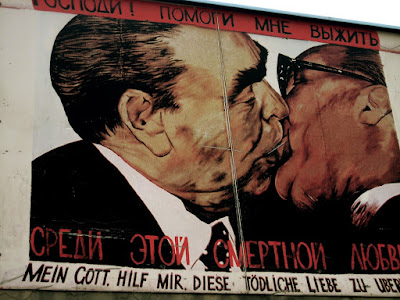
You know what really frustrates me? Tourists. Don't get me wrong, I know I'm here as a tourist, and I see my own fair share of the popular sights (I went to Notre Dame twice). What I don't understand is tourists and their obsession with cameras and taking photos of anything even remotely famous – as if by taking this photo they can go home and show everyone how well travelled they are.
Take yesterday for example. I'm in Paris at the moment, and thought I would wander down to the Musee d'Orsay for a few quiet hours of perusing the gallery's Impressionist works. I am yet to see a Van Gough in the flesh, and this was the perfect place to spend a casual Saturday afternoon.
There was no queue to get into the d'Orsay and even as I moved around the gallery I noticed a distinct lack of large crowds. Where was everybody? As I moved upstairs it suddenly dawned on me that some of the 5th floor rooms were dedicated entirely to Van Gogh pieces.
Sure enough as I reached the top floor I heard the distinctive murmur of a room full of people.
Now I know Van Gogh had an excellent eye for colour and technique, but there were rooms full of Renoir's, Monet's and Manet's in other parts of the building, why was everyone so obsessed with this one? What made matters worse was I couldn't stand for two seconds admiring the skilfully applied brushstrokes before two or three Leica/Nikon/Canon lenses were shoved over my shoulder and started snapping away. I was appalled as I watched these people move around to almost every painting taking photos; of the canvas, themselves with the canvas and even their significant other with the canvas. Some even posed like models beside the painting. It’s like they didn’t even care about what they were standing next to. It’s a quick snap and then move on to the next one. Do they even know what they are photographing?
As I scanned the room I realised that other people were doing the same thing with small point-and-shoots and even video cameras.
I was so frustrated that I left the room in haste. As I walked downstairs I thought to myself; shouldn’t art be enjoyed because an individual finds it beautiful or evocative? Have we become so blinded that we only want to see an artwork because it appears on coffee mugs, t-shirts, mouse pads and tea towels? And to make matters worse, it seems that a mental picture is just not enough anymore.
I still vividly remember seeing my first Basquiat. I was in Barcelona and it moved me in a way no other painting has managed to achieve yet. I had to sit down in front of it and admire it for a while. It was by no means his best work, but I could not comprehend that he had stood in the same position I was now, Charlie Parker blaring in the background while he contemplated what to do next. That’s what I call an art experience. I will admit I took a photo of it, but it was the only one from the whole exhibition!
So to be perfectly honest I’m not totally against people taking Kodak moments of some art works, nor I am I going to tell someone to stop. They are free to do whatever they want, just so long as they spend time admiring it first, taking in the finer details and only saving their cameras for the ones they really take real pleasure in. I fear very soon that art may become so transparent that the magic will be forgotten, and people will take these pieces of work at their face value, rather than being awed by its deeper meaning. It would be an absolute travesty.



































